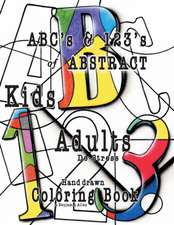Solving Critical Design Problems: Theory and Practice
Autor Tania Allenen Limba Engleză Paperback – 18 iun 2019
Solving Critical Design Problems encourages a design approach that challenges assumptions and allows designers to take on a more critical and creative role. With over 100 images, this book will appeal to students in design studios, industrial and product design, as well as landscape and urban design.
| Toate formatele și edițiile | Preț | Express |
|---|---|---|
| Paperback (1) | 253.65 lei 43-57 zile | |
| Taylor & Francis – 18 iun 2019 | 253.65 lei 43-57 zile | |
| Hardback (1) | 762.50 lei 43-57 zile | |
| Taylor & Francis – 24 iun 2019 | 762.50 lei 43-57 zile |
Preț: 253.65 lei
Preț vechi: 295.32 lei
-14% Nou
Puncte Express: 380
Preț estimativ în valută:
48.55€ • 52.76$ • 40.81£
48.55€ • 52.76$ • 40.81£
Carte tipărită la comandă
Livrare economică 21 aprilie-05 mai
Preluare comenzi: 021 569.72.76
Specificații
ISBN-13: 9780367025847
ISBN-10: 0367025841
Pagini: 232
Ilustrații: 42 Line drawings, black and white; 147 Halftones, black and white
Dimensiuni: 174 x 246 x 11 mm
Greutate: 1.07 kg
Ediția:1
Editura: Taylor & Francis
Colecția Routledge
Locul publicării:Oxford, United Kingdom
ISBN-10: 0367025841
Pagini: 232
Ilustrații: 42 Line drawings, black and white; 147 Halftones, black and white
Dimensiuni: 174 x 246 x 11 mm
Greutate: 1.07 kg
Ediția:1
Editura: Taylor & Francis
Colecția Routledge
Locul publicării:Oxford, United Kingdom
Public țintă
UndergraduateCuprins
Foreword
Preface
Chapter 1: Introduction: Defining the Drivers of Design Theory and Practice
Part 1: Design and Usability: If a Design Falls in the Forest…
Chapter 2: From Universal to Individual Experiences
Chapter 3: Experiential and Adaptive Design Thinking
Chapter 4: Design as Dialogue: Case Studies of Experiential Design Thinking
Part 2: Design and Technology: Not If, But When
Chapter 5: Reciprocity and Impact
Chapter 6: Networked Design Thinking
Chapter 7: Visualizing the Invisible: Case Studies of Networked Design Thinking
Part 3: Design and Sustainability: Killing Messengers
Chapter 8: Paradigm Shifts: Designing Resilient Systems
Chapter 9: Ecological Design Thinking
Chapter 10: Creating Resilient Futures: Case Studies of Ecological Design Thinking
Part 4: Design and Morality: Do the Right Thing
Chapter 11: Making change, Design as Moral Mediator
Chapter 12: Narrative Design Thinking
Chapter 13: Creating Stories Together: Case Studies of Narrative Design Thinking
Chapter 14: Putting it All Together—Design Futures
Preface
Chapter 1: Introduction: Defining the Drivers of Design Theory and Practice
Part 1: Design and Usability: If a Design Falls in the Forest…
Chapter 2: From Universal to Individual Experiences
Chapter 3: Experiential and Adaptive Design Thinking
Chapter 4: Design as Dialogue: Case Studies of Experiential Design Thinking
Part 2: Design and Technology: Not If, But When
Chapter 5: Reciprocity and Impact
Chapter 6: Networked Design Thinking
Chapter 7: Visualizing the Invisible: Case Studies of Networked Design Thinking
Part 3: Design and Sustainability: Killing Messengers
Chapter 8: Paradigm Shifts: Designing Resilient Systems
Chapter 9: Ecological Design Thinking
Chapter 10: Creating Resilient Futures: Case Studies of Ecological Design Thinking
Part 4: Design and Morality: Do the Right Thing
Chapter 11: Making change, Design as Moral Mediator
Chapter 12: Narrative Design Thinking
Chapter 13: Creating Stories Together: Case Studies of Narrative Design Thinking
Chapter 14: Putting it All Together—Design Futures
Notă biografică
Tania Allen is an Associate Professor of Art and Design and Design Studies at North Carolina State University in Raleigh, North Carolina, USA.
Recenzii
"This book is written from the perspective of an individual who has studied, practiced and taught design. It is the interaction of these experiences that cause her to adopt a Socratic underpinning to the act of design. She inspires the reader to consider the act of design in the context of questions that stimulate thoughts of culture and place to enrich the utilitarian aspects of a design project. This approach opens the path toward inter and transdisciplinary approaches defining the act of design as a means to pose a way of seeing design as a rhetorical activity. It is this connection between the realization of artifacts and the role of design in the definition of culture that distinguishes this book. There is real substance in this monograph for the experienced design professional and it serves as an inside insight for those who are new to the design activity. It is worthy to be required reading in the classroom and is a must read for those who are seeking to understand the design culture."
Marvin J. Malecha, FAIA, DPACSA
President, NewSchool of Architecture and Design, San Diego, California
Marvin J. Malecha, FAIA, DPACSA
President, NewSchool of Architecture and Design, San Diego, California
Descriere
Solving Critical Design Problems encourages a design approach that challenges assumptions and allows designers to take on a more critical and creative role. With over 100 images, this book will appeal to students in design studios, industrial and product design, as well as landscape and urban design.












